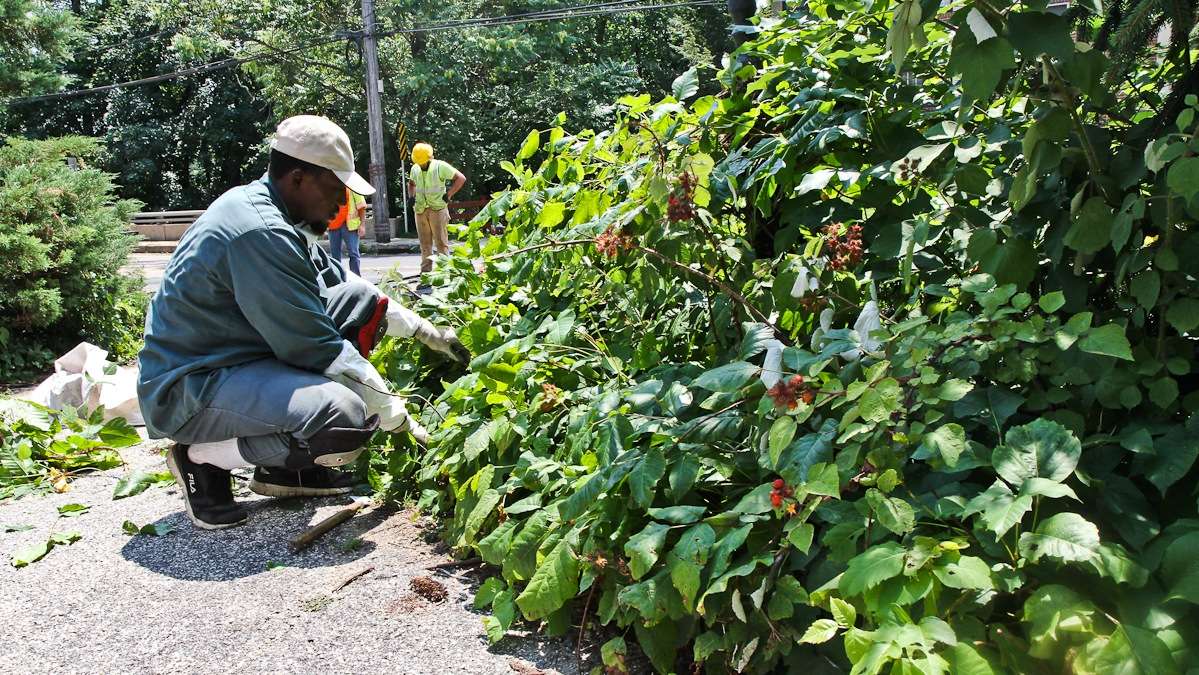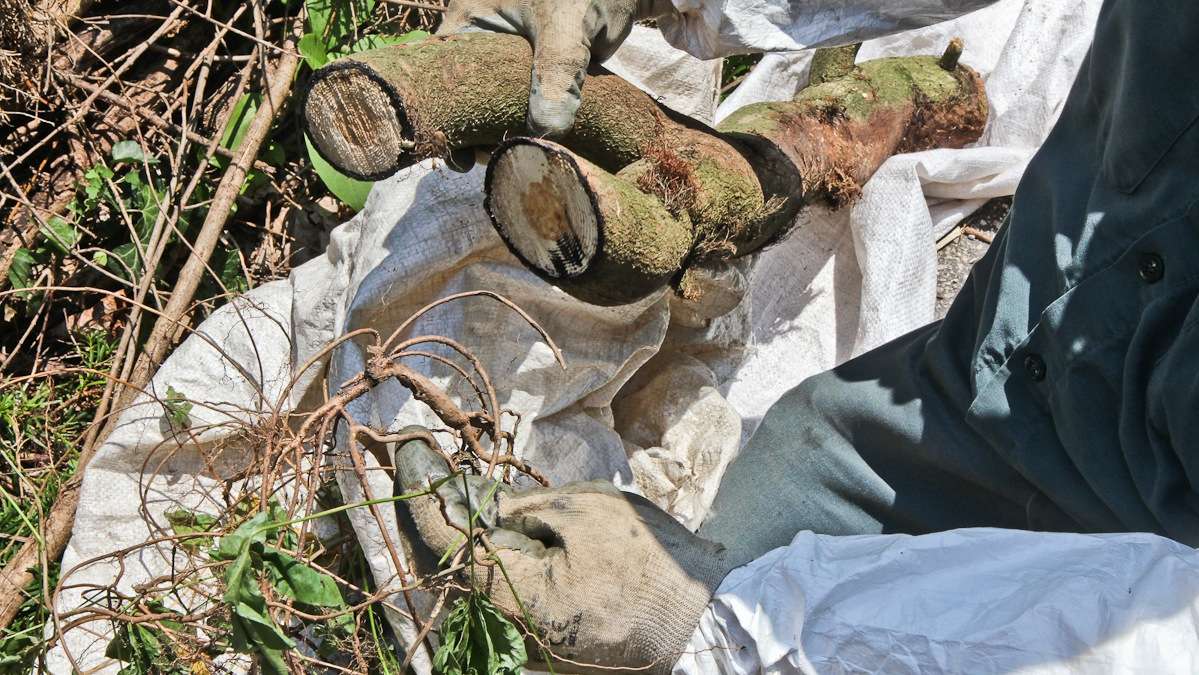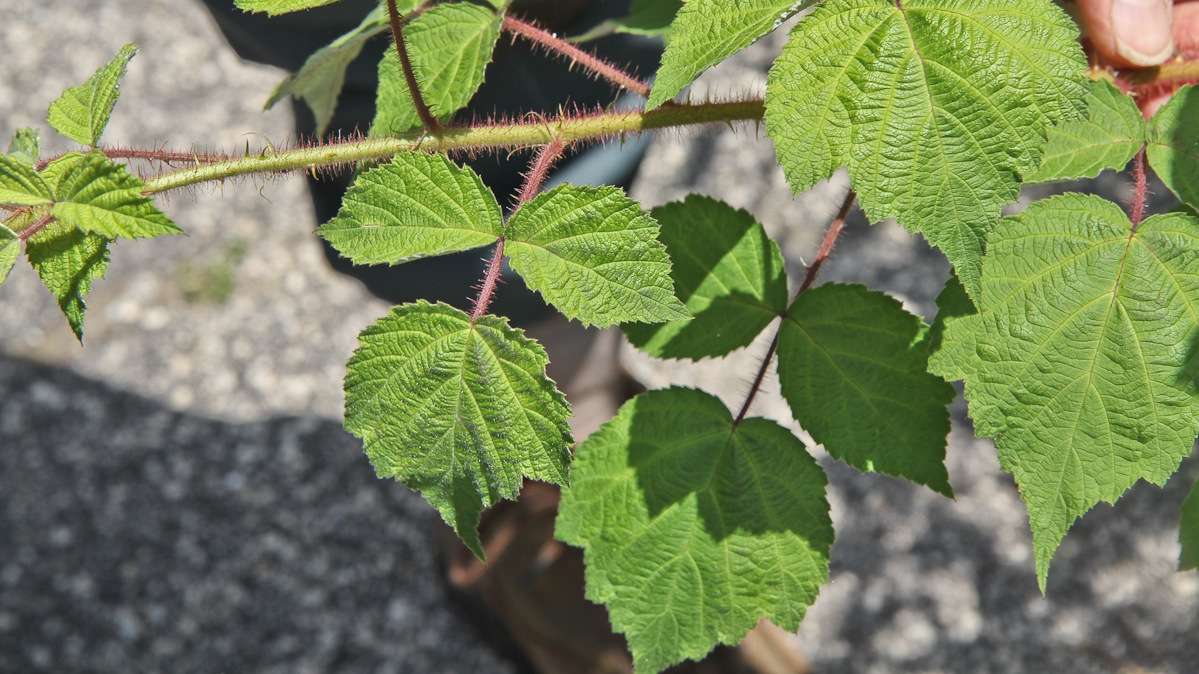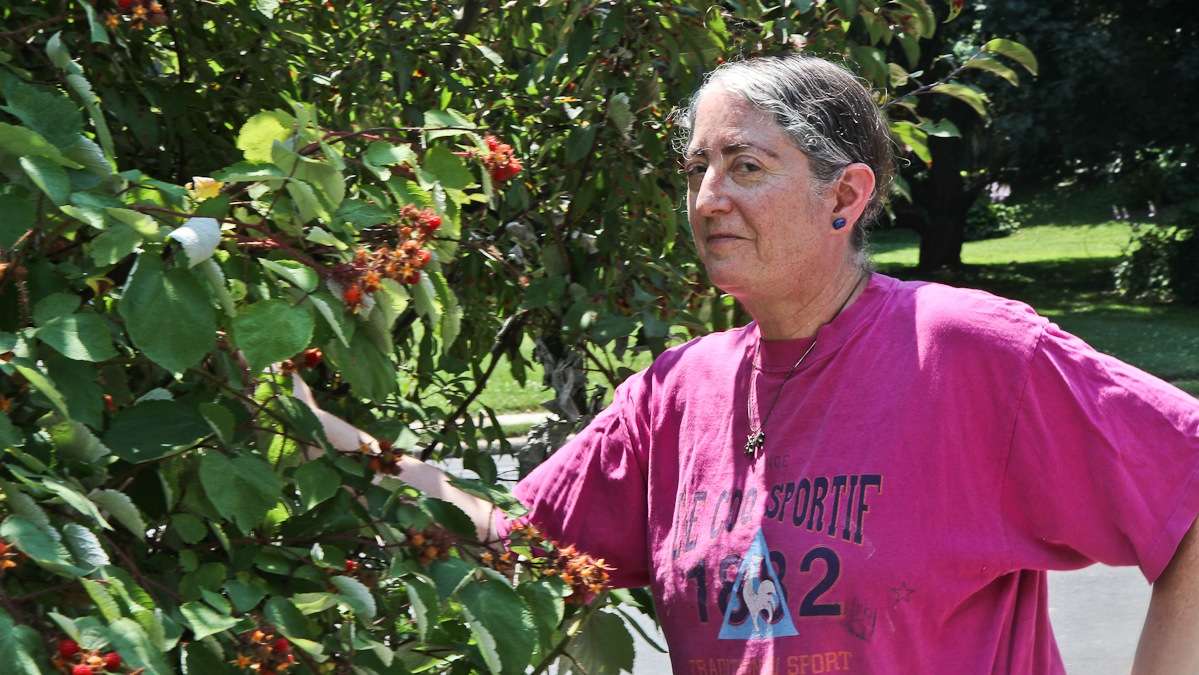3 tips for identifying poison ivy — beyond ‘leaves of three’
ListenFor the past few summers, Elkins Park homeowner Laura Frank has been managing the poison ivy in her yard on her own. This year, though, the patch in her front yard exploded, seemingly overnight.
“I was getting people walking by, through the township, looking at that and eyeing it, and swerving their baby carriages out of the way,” Frank said. “I thought, ‘Oh my god. I really got to get this out of here.'”
Frank has a dense thicket of poison ivy about 30 feet long and 10 feet wide in her yard, covering the ground under a spruce tree between her driveway and sidewalk.
“I realized looking at it that I was out-matched,” Frank said.
So Frank called in reinforcements: Umar Mycka, a horticulturalist and poison ivy removal specialist, and his removal company.
“You hardly see the poison ivy as heavy as this,” Mycka said in Frank’s front yard. “It’s getting good sun, a little bit of shade, and it’s got a nice open place to grow.”
Mycka’s employee Abdul Rahman Ilyas used a shovel to loosen up the buried root system of the poison ivy vine before pulling it up. He wore arm protectors and gloves and had his pants tucked into long socks while he worked.
“It’s a long root. You have to trace it all over to the end,” Illyas said. “If you cut it, it’s going to grow up again, so you have to dig down, down, so you get to the edge and pull it up.”
Mycka charges well over $1,000 for a job of this size. To avoid fees like that, he advises identifying and removing poison ivy plants when they are still young and small.
‘Leaves of three, let it be’
The phrase “leaves of three, let it be” has been guiding gardeners in poison ivy identification since it first appeared in an elementary school reader around the turn of the last century, Mycka said. But now, it is a little too general — box elder, raspberry and Jack-in-the-pulpit all have three leaves too.
“My clients say, ‘Gosh, everything has leaves of three. How do I tell beyond leaves of three?'” Mycka said.
1. Leaf arrangement is the key.
Mycka invented an addendum to the old saying, and now tells his clients: “Leaves of three, resemble me.”
“Compare it to your body,” Mycka said.
Picture a stick figure, from the waist up: two arms, touching at the shoulders, and a head on top of the neck. The arms and head are the three leaves, sprouting off the stem.
2. Mature leaves are smooth-edged.
Immature plants have teeth. Poison ivy plants don’t have thorns.
3. Seeds spread through bird poop.
Mycka advises paying attention to areas where birds congregate when weeding the yard.
“Look in those places for seedlings, and remove them when they’re small,” Mycka said.
Be careful out there
More than 80 percent of people are allergic to urushiol, the oil on poison ivy that causes the red, itchy rashes, according to Jason Lee, dermatology professor at Thomas Jefferson University.
Even if you’ve never gotten poison ivy, though, it is wise to be cautious.
“You will not get the rash typically the first time you encounter the plants,” Lee said. “But once you get sensitized, i.e. your immune system recognizes the oil, then [with] subsequent contact with the plant you will develop a rash right away, within 24 to 72 hours.”
Urushiol absorbs into skin quickly. If you accidentally touch poison ivy, Lee advises washing within 5 to 10 minutes with lukewarm or cold water and soap, and immediately washing any clothes that may have come into contact with the oil.
For detailed instructions on how to safely remove poison ivy from your yard, read You Bet Your Garden host Mike McGrath’s “Plastic Bag Dance.”
WHYY is your source for fact-based, in-depth journalism and information. As a nonprofit organization, we rely on financial support from readers like you. Please give today.











